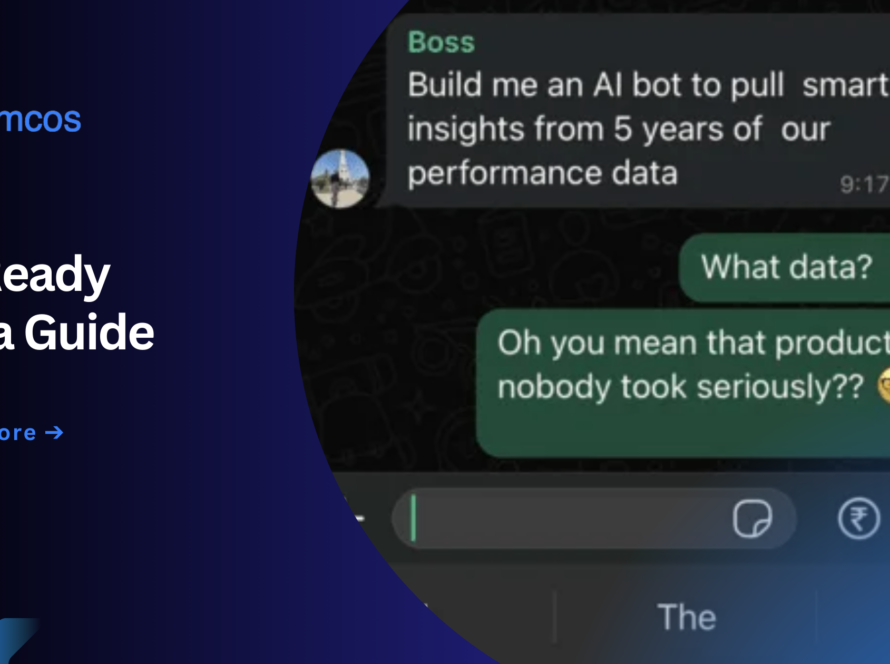Software as a service (SaaS) has completely changed the way industry delivers their software applications. SaaS covers multiple software needs which could be subscribed to online, with this convenience users don’t have to worry about the installation and maintenance just as in the case of a traditional software.
The worldwide SaaS market is valued at about USD $242 billion and has seen considerable growth in recent years. In the ever-expanding realm of Software-as-a-Service (SaaS), a relatively lesser-known yet increasingly impactful concept has emerged, known as Micro-SaaS.
What’s a Micro SaaS App?
Now, Micro-SaaS caters to niche audiences with tailored products, representing a shift towards precision and customization in software delivery. The Micro-SaaS market sets itself apart by catering tailored solutions to narrow audiences, presenting a fresh vertical to software delivery. Unlike traditional SaaS models, Micro-SaaS applications are designed for specific market segments offering customized solutions that are quick and affordable. This makes Micro SaaS applications a great choice for businesses looking for specific and specialized tools and services.
Benefits of Micro SaaS
Micro SaaS Applications offer an abundance of benefits for small businesses(service providers) as well as individuals(end-users) in multiple ways. Let’s commute over a few :
1. Micro SaaS Apps are Affordable
MicroSaaS solutions are often priced affordable making them accessible to small business & individuals with lower budgets. Various subscription based solutions or pay-as-you-go methods for pricing allows users to pay only for the features they need/use which reduces financial barriers related to initial investments involved. This flexible pricing approach reduces financial barriers, allowing small entities to access higher quality software solutions without breaking the bank. The lower investment required for microSaaS solutions make them more attractive options for startups and entrepreneurs who are operating on limited resources.
2. Specialised Micro SaaS Apps
MicroSaaS solutions are characterized by a high level of specialization, which effectively address specific needs or target niche markets. Unlike generic software offerings that aim to cater to a broad audience, MicroSaaS applications are designed with a deep understanding of the unique challenges and requirements of the intended users. This targeted approach allows MicroSaaS products to offer features and functionalities that are precisely tailored to the demands of their niche audience, ensuring that users receive maximum value and efficiency from the software.
3. Minimal maintenance
MicroSaaS solutions reduce the burden of maintenance for users as these tasks are typically managed by the software provider. Updates, patches, and technical support are seamlessly handled, reducing the need for in-house IT resources and allowing businesses to allocate their time and energy to other critical priorities. This centralized management ensures that MicroSaaS users can rely on a consistently optimized and secure software environment without the hassle of ongoing maintenance tasks.
4. Agility & Innovation
MicroSaaS companies are flexible and agile which empowers them to swiftly adapt to changing market dynamics and customer needs. By maintaining a close ear to customer feedback, these companies enhance their products, delivering timely updates and new features that address emerging requirements. This iterative approach to development fosters a dynamic relationship between MicroSaaS providers and users, fostering a culture of continuous improvement and innovation.
5. Ownership control
MicroSaaS solutions provide businesses with greater ownership control over their software. Unlike larger enterprise software solutions where businesses have limited control over the software’s development roadmap or customization options, microSaaS applications offer more flexibility. This allows businesses to tailor the software to their specific needs, integrate it seamlessly into existing workflows, and maintain control over critical aspects such as data privacy, security, and user access. With ownership control, businesses can adapt the software to evolving requirements, ensuring that it continues to meet their changing needs over time.
6. Rapid Deployment
MicroSaaS solutions offer a swift onboarding process, because of accessibility through cloud-based platforms. Unlike traditional software that requires time-consuming installation procedures, MicroSaaS can be quickly deployed, enabling businesses to adopt and integrate into existing workflows. This approach not only saves valuable time but also reduces the complexity typically associated with software implementation. Users can seamlessly transition to using MicroSaaS solutions without the need for extensive technical expertise or lengthy configuration processes, making it a convenient and efficient choice for businesses seeking rapid deployment and immediate functionality.
7. Eliminated geographical barriers
MicroSaaS solutions break down geographical barriers, enabling businesses to access and utilize the software from anywhere with an internet connection. This accessibility enhances collaboration among remote teams, facilitates real-time data sharing, and ensures seamless workflow continuity regardless of employees’ physical locations. Additionally, it allows businesses to serve customers globally, expanding their market reach and driving growth opportunities beyond traditional boundaries.
Difference between SaaS & Micro SaaS
1. Scope and Scale
SaaS – SaaS solutions are typically large-scale, offering comprehensive software suites designed to meet the needs of broad user demographics or entire industries.
Micro SaaS – MicroSaaS solutions are niche-focused, offering smaller-scale, specialized software applications tailored to meet the specific needs of smaller user segments or niche markets.
2. Complexity and Customization
SaaS – SaaS solutions often come with a high level of complexity and a wide range of features, offering limited customization options to accommodate diverse user needs.
Micro SaaS – MicroSaaS solutions are simpler and more streamlined, offering targeted features and greater customization options to meet the specific requirements of niche user groups.
3. Cost and Affordability
SaaS – SaaS solutions often come with higher subscription fees or licensing costs due to their comprehensive feature sets and larger-scale deployments.
Micro SaaS – MicroSaaS solutions are more affordable, offering lower subscription fees or pay-as-you-go pricing models, making them accessible to smaller businesses with limited budgets.
4. Target Audience and Market Reach
SaaS – SaaS solutions target broader user demographics or entire industries, aiming for mass-market appeal and widespread adoption.
Micro SaaS – MicroSaaS solutions target smaller user segments or niche markets, offering specialized functionality tailored to meet the specific needs of these niche audiences.
5. Deployment and Scalability
SaaS – SaaS solutions are typically deployed through cloud-based platforms and are designed to scale easily to accommodate large user bases and growing demand.
Micro SaaS – Micro SaaS solutions can also be deployed through cloud-based platforms but are designed to scale more modestly to meet the needs of smaller user groups or niche markets.
EXAMPLES OF Micro SaaS
Tyler Tringas was the innovator of the concept of MicroSaaS in the tech industry and his very own business ‘Storemapper’ is one of the fundamental examples of microSaaS. Storemapper provides a simple solution for businesses to embed store locations on their websites for assisting customers to find store locations nearby.
There are a lot more such examples of MicroSaaS solutions prevailing in the market. Let’s discuss some of them :
1. SolidGigs – SolidGigs serves as a lead generation platform, seamlessly integrating with your freelance business to provide a steady stream of high-quality opportunities, empowering freelancers to focus on what they do best.
Link : https://solidgigs.com/
2. Hypefury – Hypefury is a platform designed to assist you in crafting engaging social media content. With a dynamic community of thousands of co-creators, you’ll have access to a pool of talent ready to curate top-notch content for your tweets.
Link : https://hypefury.com/
3. Placid – A versatile micro-SaaS solution, Placid empowers users to create dynamic images tailored for social media, emails, and various digital platforms. As a standalone tool, it efficiently fulfills a specific function.
Link : https://placid.app/
4. Pluito – It is a comprehensive all-in-one platform engineered to facilitate seamless management, collaboration, sharing, creation, and workflow automation. Its core functionalities include the ability to optimize task creation in real-time, track time efficiently, and share progress updates.
Link : https://www.plutio.com/
5. PDF Shift – It is a platform that provides a quick way to convert HTML to PDF format. It offers parallel conversion along with privacy and raw HTML support . It can convert almost any webpage to Pdf.
Link : https://pdfshift.io/
6. AnyTrack – AnyTrack aims to empower marketers with a conversation data platform, providing comprehensive data-driven marketing insights and functionalities, enabling informed decision-making and optimization of marketing strategies.
Link : https://anytrack.io/
7. Simple Analytics – A platform-independent micro-SaaS solution, Simple Analytics offers privacy-centric website analytics. It exemplifies a niche business catering to a specific demand.Link : https://www.simpleanalytics.com/
In conclusion,
MicroSaaS represents a great shift in the software industry, offering tailored solutions to niche audiences with precision and customization. With its affordability, specialization, and minimal maintenance requirements, MicroSaaS is revolutionizing the way businesses access and utilize software tools. By empowering businesses with greater ownership control, agility, and rapid deployment capabilities, MicroSaaS enables them to adapt quickly to changing market dynamics and customer needs. As demonstrated by examples like Storemapper, SolidGigs, and Placid, microSaaS solutions continue to redefine the landscape of software delivery, providing efficient, targeted, and cost-effective solutions for businesses of all sizes.
At Himcos, we’re dedicated to tackling the challenges of MicroSaaS head-on. As the use of these apps grows, many are showing issues with usability, system reliability, and data security. Some have even caused compliance problems and financial losses. Our approach to updating these apps includes fixing old features, upgrading code to meet modern standards, and aligning changes with the app’s goals. Need to revamp your MicroSaaS platform? Talk to our strategist today.




